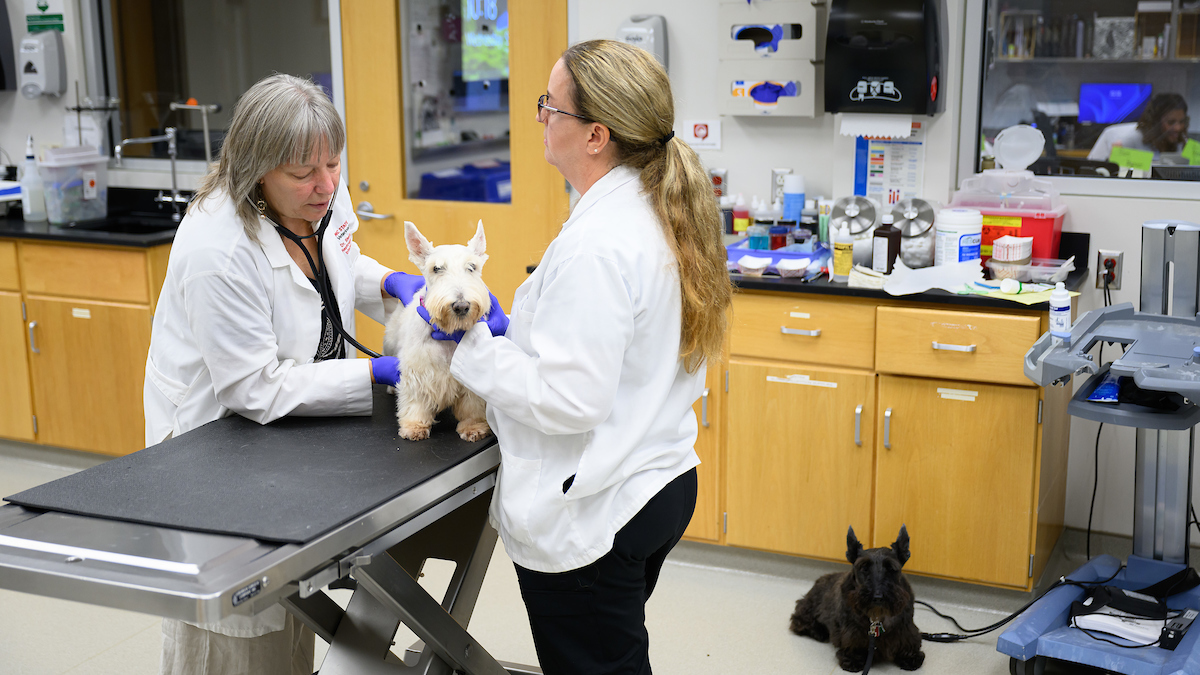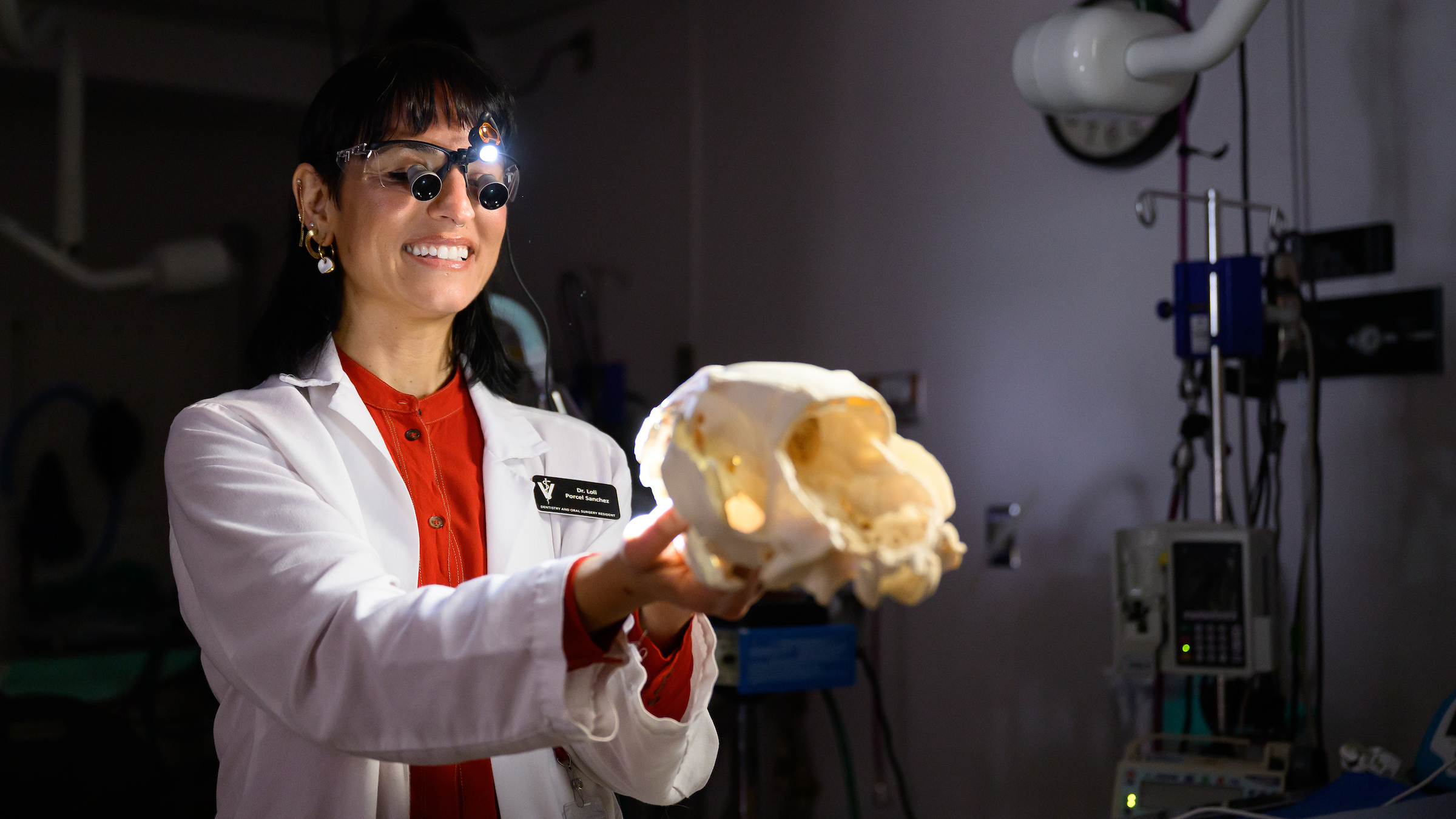NC State Connections At Core of Kacie’s Comprehensive Care
Confronted with a cat's cluster of concerning symptoms, NC State alumnae worked with the university's Veterinary Hospital to find answers.
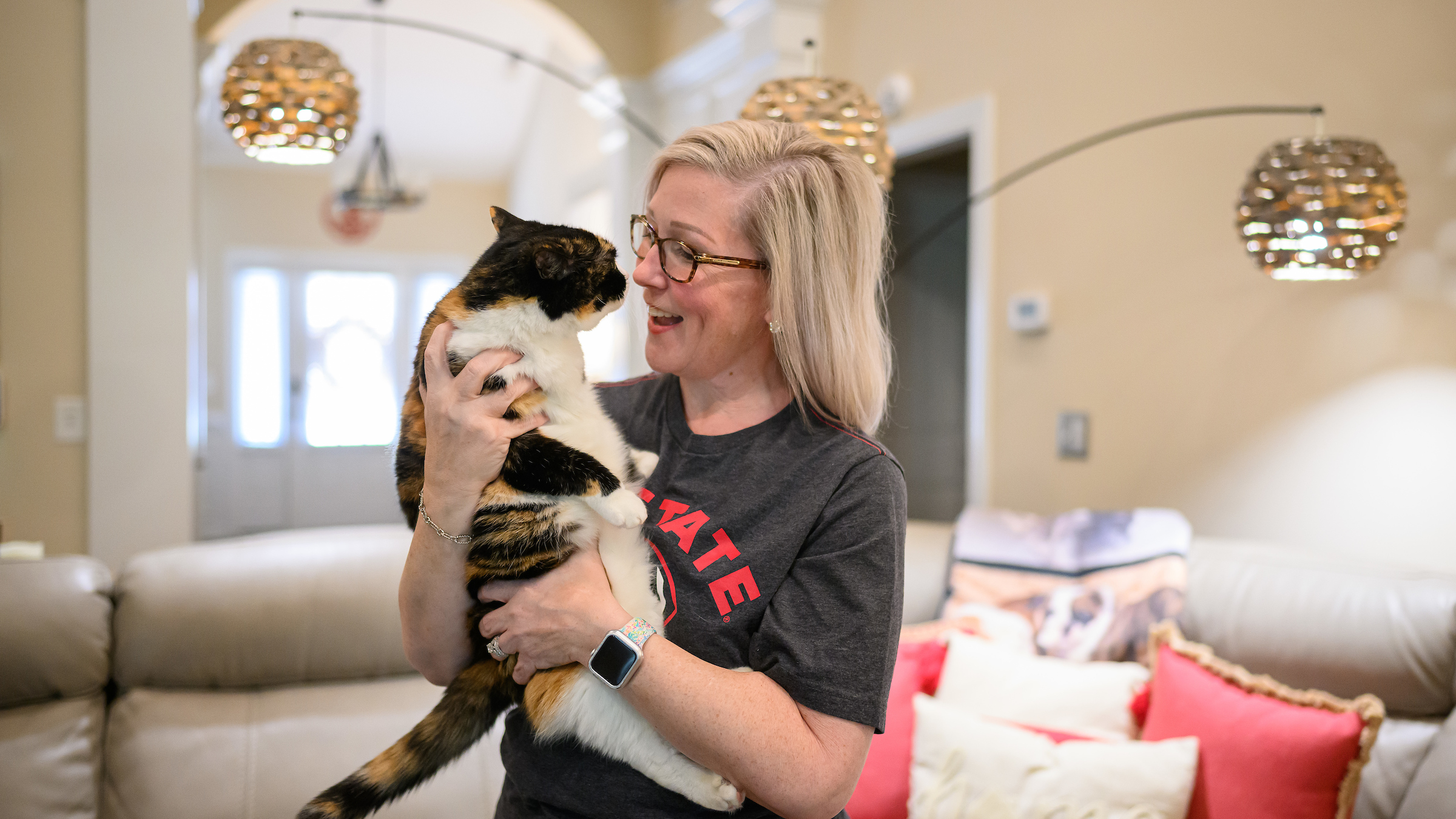
Kacie Bilyeu is a diva, and her family is quick to admit it.
The 3-year-old feline runs the household with sassy tail swishes that snap her two canine companions to attention and sweet “head boops” that melt her humans’ hearts.
So when the sociable calico from Clayton started hiding in hard-to-reach places, acting lethargic and rapidly losing weight in February, both her owner and local veterinarian knew something was wrong — and precisely where to go for answers.
Kacie’s owner, Melissa Bilyeu, is an NC State alumna who had taken another pet to the NC State Veterinary Hospital, so she knew Kacie was in good hands. Kacie’s regular veterinarian, Dr. April Keefe of Clayton Animal Hospital, completed her bachelor’s degree at NC State and her DVM clinical year at the College of Veterinary Medicine.
These Wolfpack ties connected Kacie to vital care after Keefe discovered the cat had severe anemia and NC State subsequently found she had a rare blood type and not one, but three strains of a troublesome bacteria.
Her treatment has been a journey, but Bilyeu is thankful NC State’s expertise has been there at every step.
“It’s one of those moments when I go, ‘These are my people,’” says Bilyeu, who received her bachelor’s degree in English and teaching certification from NC State. “This experience embodies for me the good things that happen at State and demonstrates that the school continues to produce compassionate people, experts in their areas, that you can trust with something as dear as your pets.”
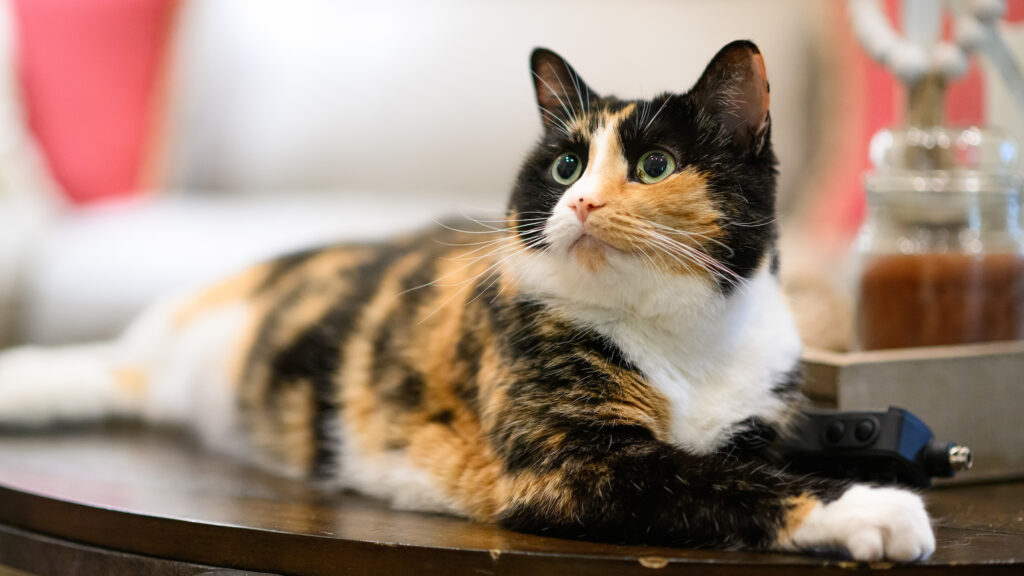
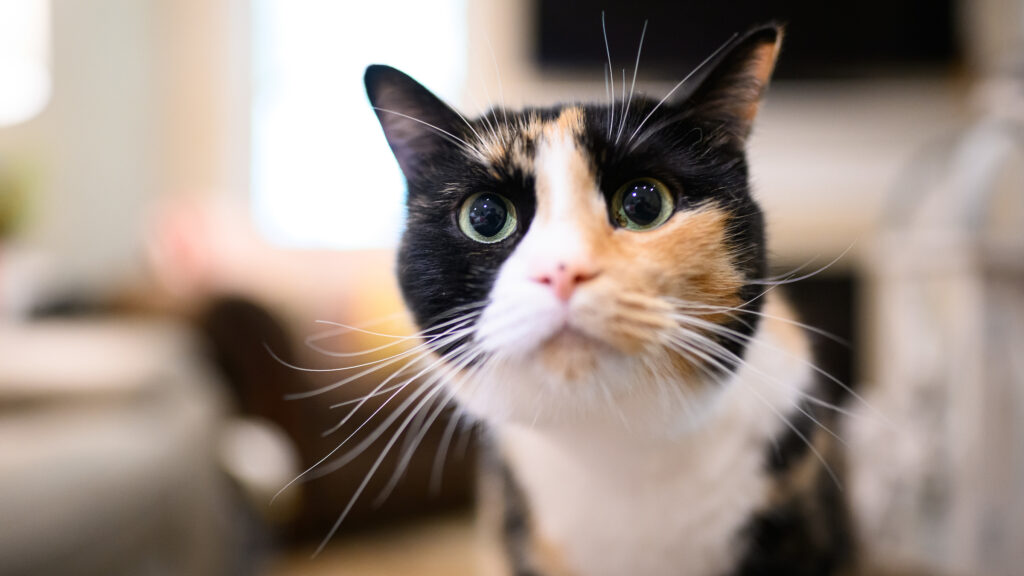
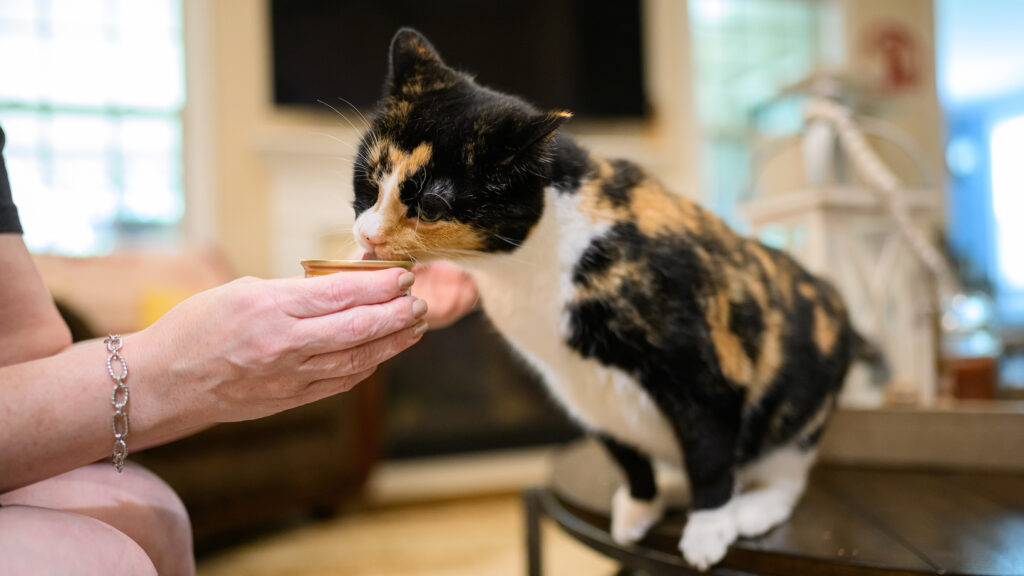
Exceptional cat, extraordinary circumstances
Bilyeu took Kacie to see Keefe on Feb. 28 after she noticed Kacie was hiding more and eating so little she became bony.
“When Kacie came in, she wasn’t stressed,” Keefe says. “She was purring, kind of head-butting everybody and super sweet, but she was really pale. She didn’t look as sick as she was.”
Blood testing revealed Kacie had anemia so severe it was affecting organs including her kidneys and liver. It was too late in the afternoon for Keefe’s clinic to start a blood transfusion, so she referred Kacie to the NC State Veterinary Hospital for further evaluation.
There, technicians found that Kacie is among the fewer than 2% of cats in the U.S. with type B blood, says Dr. Sophie Amirsultan, an emergency and critical care resident at the Veterinary Hospital. They gave Kacie a transfusion with the limited supply on hand and placed an order with a blood bank for more.
But a rare blood type doesn’t cause anemia. To try to find the cause of the cat’s symptoms, her care team submitted blood samples for infectious disease testing at an on-site lab and took a sonogram of her abdomen to look for internal bleeding, says Amirsultan, who received her DVM from NC State.
“The PCR test was negative for pretty much all of the diseases, so that did stump us a little bit,” she says. “However, bartonella can be very challenging to diagnose, because it is a difficult organism to actually isolate. A lot of the tests that we do for bartonella end up being negative.”
So Kacie’s team tried another method. They tested her immune system for antibodies against the bacteria and found their culprit.
“Her immune system titers for bartonella came back elevated, supporting that her body was fighting off an infection,” Amirsultan says.
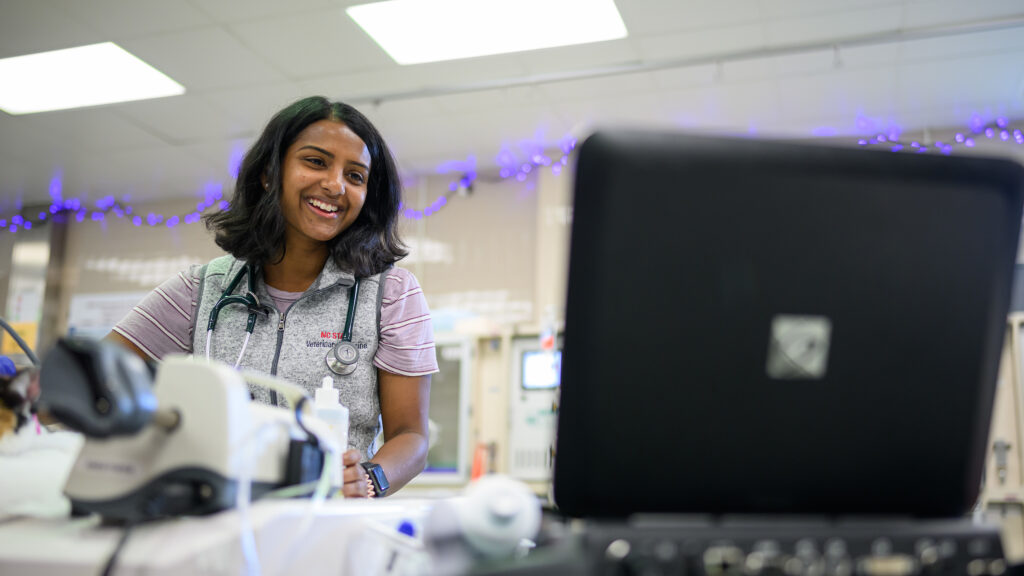
Both Keefe and Amirsultan say they suspected Kacie might have had bartonellosis, an infection of bartonella bacteria, before testing confirmed it. The bacteria is prevalent in cats, with an estimated 30 to 40% of felines shown to carry common strain Bartonella henselae. Feline carriers are often asymptomatic unless they develop an illness, as Kacie did.
Being exceptional, Kacie tested positive not just for Bartonella henselae, but also for Bartonella vinsonii and Bartonella koehlerae — the highest number of concurrent bartonella infections Keefe had ever seen.
Fortunately for Kacie, the NC State College of Veterinary Medicine had the resources for her recovery.
A model patient
Kacie spent six days in the Veterinary Hospital’s intensive care unit while she received treatment, including a second blood transfusion and steroids to combat red blood cell destruction.
Feline Health Center co-director Dr. Alex Lynch says the hospital’s blood bank, led by Dr. Sarah Musulin and Alicia Ossi, and the college’s Vector Borne Disease Diagnostic Lab, headed by world-renowned bartonella researcher Dr. Ed Breitschwerdt, played key roles in Kacie’s care.
“NC State is at the forefront of bartonella research in animals and people, and the lab’s dedicated work allows us to effectively diagnose and treat infections like Kacie’s,” he says.
Kacie was an ICU favorite, Amirsultan says, receiving visits from hospital staff and the Bilyeus in the internal medicine area’s recently renovated cat-friendly rooms.
“Everyone fell in love with her,” Amirsultan says. “She was very interactive. She would walk around and explore and have the best time visiting with her mom. She was such a great patient, and we all enjoyed having her in the hospital.”
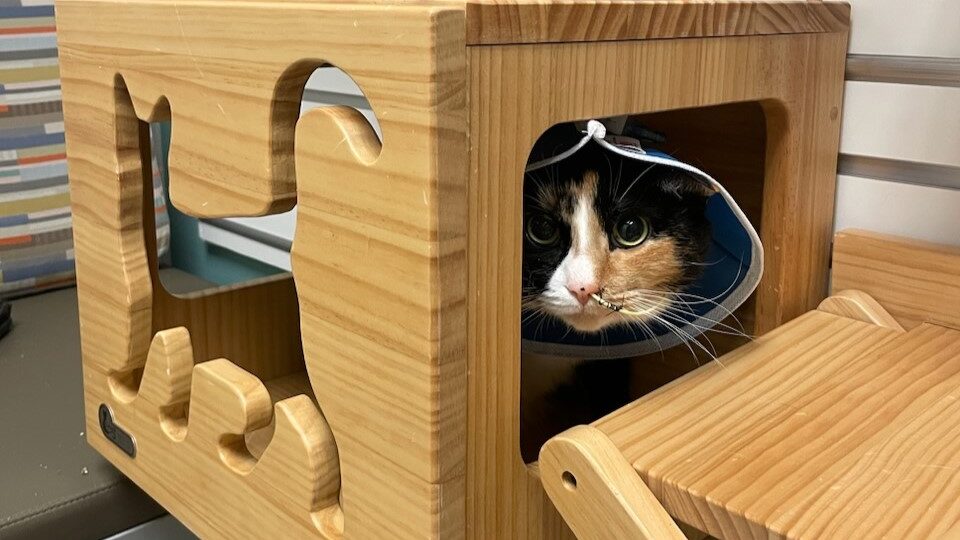
Bilyeu says she appreciated visiting Kacie and receiving updates from Amirsultan, including pictures and videos, when she could not be there.
“Dr. Amirsultan was an absolute dear, and the other folks in the ICU were just fabulous,” Bilyeu says. “And we’re convinced that Kacie now thinks the cat room is her room.”
Kacie returned home March 6 and has been primarily seeing Keefe since, with consultation from Breitschwerdt. She is as outgoing as ever but still needs medication and regular testing as she finishes fighting the infection and her blood counts return to normal.
“I’m in close communication with Melissa and the vet school, and that makes it a lot easier to make sure we’re getting Kacie better,” Keefe says.
Backed by the Pack
Kacie is a very lucky girl who had many members of the CVM family looking out for her, Amirsultan says.
“A sick cat is a very fragile animal. They’re already hiding a lot of illness, and so by the time they’re very sick, any additional stress can be fatal,” she says. “Our ER and ICU staff, especially our nurses, do a phenomenal job handling stressed cats and go out of their way to provide them a comforting environment.”
NC State’s high-quality, specialized care is precisely why Keefe refers her patients there.
“If a pet needs more testing or a service I can’t do quickly enough, of course I’m going to send them to NC State,” Keefe says.
Bilyeu’s experiences at the hospital, first with her yellow lab Daisy and now with Kacie, have shown her the facility and its staff are one-of-a-kind.
“Never once did I feel like our questions were left unanswered. Never once did I feel like I was a burden if we had questions or wanted an update,” she says. “There were evening and weekend calls that were reassuring and detailed about Kacie’s prognosis and treatment.”
Kacie is back to being the queen of the Bilyeu’s four-pet household, much to the relief and gratitude of her family.
“She’s probably down to about four lives after this experience,” Bilyeu jokes. “We’ve encouraged her to lay low.”
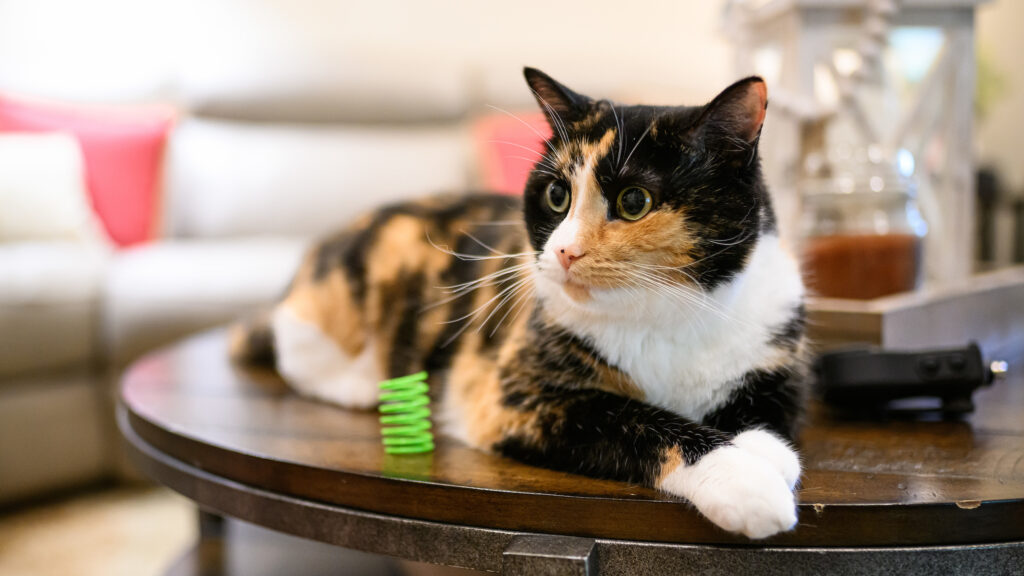
- Categories:

